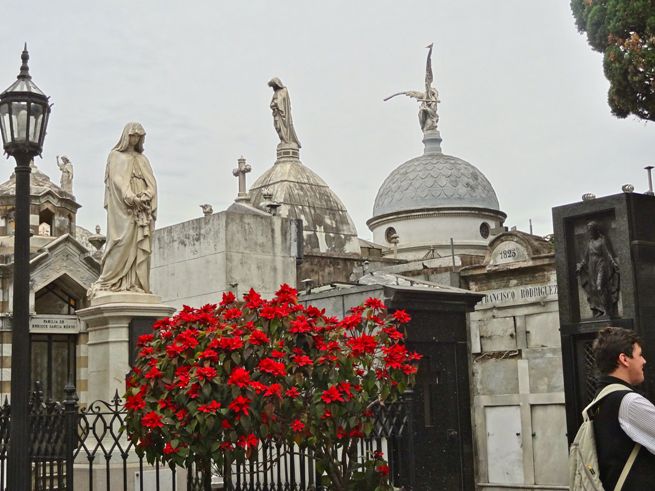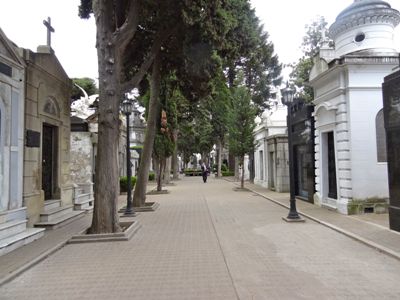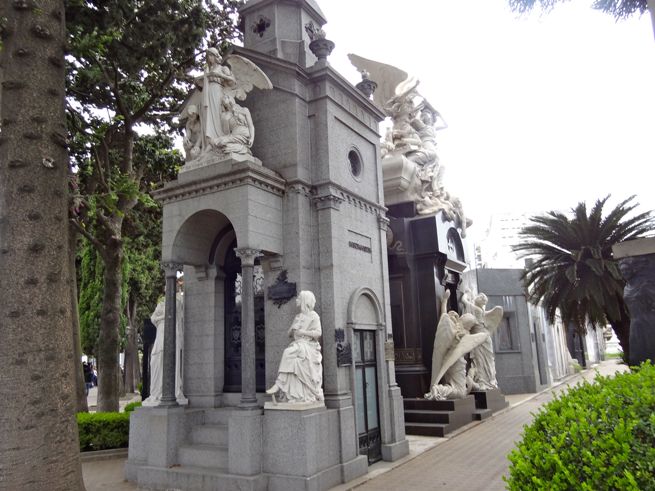































IS ARGENTINA FORGETTING EVITA?
|
“Don’t cry for me Argentina” is a haunting song about Eva Peron, the wife of Argentine dictator, Juan Peron. Before her early death at the age of 33 as a victim of cancer, she endeared herself to the poor class of Argentines by championing social programs and giving out government money to eliminate poverty. Evita was a symbol of hope to the common laborer.
 After her death, her body was embalmed and disappeared three years later when the military overthrew Juan Peron’s government and forced him into exile in Spain.
After her death, her body was embalmed and disappeared three years later when the military overthrew Juan Peron’s government and forced him into exile in Spain.
As a symbol of Peronism, which was still immensely popular with millions of Argentina’s poorest citizens, the new military leaders decided that she must disappear to diminish the influence of the labor movement.
Initially in 1957, Evita’s body was taken to Italy and buried in a Milan cemetery under a different name, where she remained until 1971.
After much political change in Argentina, and with the military becoming increasingly brutal and unpopular, Peronism was again allowed to become a legal political party in the hope of stabilizing public opinion.
Consequently, the body of Evita was removed from the Milan cemetery and driven to Spain, where she was delivered to the Madrid home in exile of Juan Peron and his third wife, Isabel.
When Juan Peron and Isabel were allowed to return to Argentina in 1973, he was elected president and Isabel was elected vice-president. The following year, now almost 79 years old, Juan Peron died and Isabel became president. She was the one who brought Evita’s body back to Argentina and completed her long journey home.
 While Isabel remained president, Evita’s body was displayed at the government’s headquarters, allowing the faithful to briefly revere her restored embalmed body. However, when Isabel’s government was overthrown by the military in 1976, Evita’s body was moved to her family’s mausoleum in Recoleta Cemetery in Buenos Aires.
While Isabel remained president, Evita’s body was displayed at the government’s headquarters, allowing the faithful to briefly revere her restored embalmed body. However, when Isabel’s government was overthrown by the military in 1976, Evita’s body was moved to her family’s mausoleum in Recoleta Cemetery in Buenos Aires.
In the striking cemetery of Recoleta with its huge crypts and mausoleums designed to show a family’s wealth and importance, the Duarte mausoleum does not stand out. Since it is not on one of the main, wide paths, which intersect throughout the gated area, you have to search out the mausoleum and realize that the name on the outside will not be “Peron”, but rather her maiden name of “Duarte.”
On past visits, it was always easy to see where Evita was buried, because crowds of people were lined up to squeeze through the narrow passage and pay tribute to her memory. Fresh flowers were placed there every day, and the time of Evita and her continued influence in Argentine politics seemed to continue.
However, just recently when we visited Recoleta Cemetery, there were no crowds of people near Evita’s mausoleum and the flowers were plastic, no longer real.
Can it be that the Argentines are finally putting Evita in the past?


 "Flying high over the peaks of Alaska in our 6 passenger plane to Punchbowl Glacier was thrilling. Once on the ground, we boarded our dog sled for an exciting race across the glacier pulled by our team of eager, trained dogs – thinking the Iditarod! And who didn’t love playing with the 3 little future Iditarod puppies afterwards?! It was a wonderful way to enjoy Alaska on our cruise, and we all loved it. Thanks again for a wonderful vacation that was perfect for all ages in our family group." Ann & Steve
"Flying high over the peaks of Alaska in our 6 passenger plane to Punchbowl Glacier was thrilling. Once on the ground, we boarded our dog sled for an exciting race across the glacier pulled by our team of eager, trained dogs – thinking the Iditarod! And who didn’t love playing with the 3 little future Iditarod puppies afterwards?! It was a wonderful way to enjoy Alaska on our cruise, and we all loved it. Thanks again for a wonderful vacation that was perfect for all ages in our family group." Ann & Steve